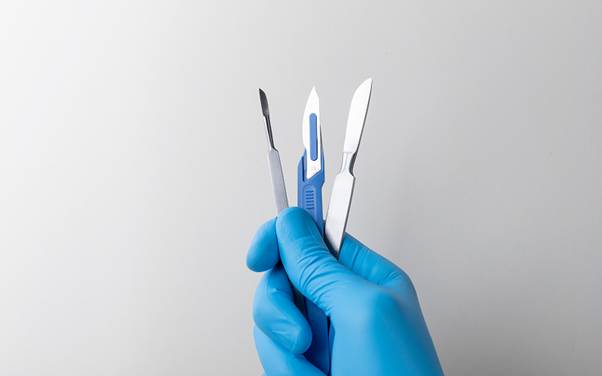
Cleanrooms are highly controlled environments used in industries such as pharmaceuticals, biotechnology, microelectronics, and aerospace to maintain minimal levels of pollutants. Because even the tiniest particle or fibre can compromise the integrity of processes or products, these spaces are governed by strict rules and protocols. For businesses in Singapore that depend on such precision, consulting a trusted cleanroom equipment supplier is often the first step in achieving compliance and operational efficiency.
Understanding what items are prohibited from entering a cleanroom is essential for anyone working in or around these specialised environments. From personal belongings to specific materials, the restrictions are in place to protect product integrity and ensure the environment remains contamination-free.
Why Are Certain Items Banned in Cleanrooms?
Cleanrooms are classified based on the number and size of particles permitted per volume of air. This means that even everyday items can introduce contaminants if not properly managed. The key sources of contamination include humans, materials, and equipment. Any unauthorised item can potentially release particles, chemicals, or microbes that compromise cleanroom standards.
To safeguard product quality, all items that enter a cleanroom must be evaluated for their particle-shedding potential and their compatibility with the cleanroom’s environment. This is where proper cleanroom design and facility protocols come into play. Additionally, having a robust cleanroom monitoring system helps detect anomalies and maintain a consistent level of cleanliness.
Personal Items to Avoid
Personal items are among the most common contaminants in cleanrooms. Items such as wallets, mobile phones, handbags, and keys are generally not permitted unless they have been specially cleaned or housed in protective cases. These items tend to collect dust, fibres, and microbes, making them unsuitable for controlled environments.
Even items worn on the body, such as jewellery, makeup, and perfumes, are discouraged. These products can flake off or emit particles that interfere with the cleanroom’s sterile conditions. For this reason, cleanroom operators are usually required to wear approved garments and avoid any non-essential accessories.
Clothing Materials That Pose a Risk
Outside clothing made from cotton or wool is typically banned inside cleanrooms. These fabrics shed fibres and particles that can remain suspended in the air for long periods. Instead, cleanroom personnel wear specially designed garments made of non-shedding synthetic fibres. These garments are often supplied by the same cleanroom equipment supplier who provides filtration systems and air showers.
Footwear is another area of concern. Street shoes carry dirt, microbes, and moisture that can wreak havoc on a cleanroom’s internal conditions. Employees are often required to wear designated cleanroom boots or covers that do not introduce external contaminants.
Paper, Pens, and Office Supplies
Standard office materials such as paper, pens, and notebooks may seem harmless but can be a source of particle emission. Conventional paper sheds fibres, and most pens contain inks or glues that may emit volatile organic compounds (VOCs). To avoid these issues, cleanrooms often use special paper and stationery made from synthetic materials that don’t generate particles.
Furthermore, any required documentation is usually managed digitally or kept in sealed plastic sleeves when physical copies are necessary. Even labels used in the cleanroom environment must meet specific standards and should not peel, flake, or degrade.
Electronic Devices and Gadgets
Unapproved electronic devices are typically banned inside cleanrooms due to static discharge, dust accumulation, and potential off-gassing from materials used in their construction. If devices such as laptops or cameras are needed, they must go through a cleaning process and be encased in cleanroom-compatible covers.
Using devices within a cleanroom must also comply with data security and cleanliness standards. Devices that pass inspection may be connected to the cleanroom monitoring system, which helps track and record environmental conditions such as temperature, humidity, and particle count.
Food, Beverages, and Cosmetics
No food or beverages are allowed in a cleanroom, regardless of the cleanliness level. These items can introduce a wide range of contaminants, including crumbs, oils, and bacteria. The same applies to chewing gum and water bottles. Even sealed food packaging poses a risk because of particulate residue.
Cosmetics and personal care products like lotions and deodorants may emit vapours or particles that can affect the cleanroom atmosphere. Employees working in cleanrooms are generally advised to avoid applying any products before entering the area.
Conclusion
The restrictions on what can be brought into a cleanroom are based on years of scientific and industry research aimed at maintaining ultra-clean environments. Every item, no matter how small or common, has the potential to introduce contaminants that may compromise production and safety. This is why adhering to strict guidelines and leveraging tools like a cleanroom monitoring system is critical. For organisations looking to maintain the highest standards, partnering with a reliable cleanroom equipment supplier ensures that the right tools, materials, and practices are in place from the outset.
To learn more about maintaining cleanroom standards or sourcing high-grade cleanroom supplies, contact Dou Yee today.
